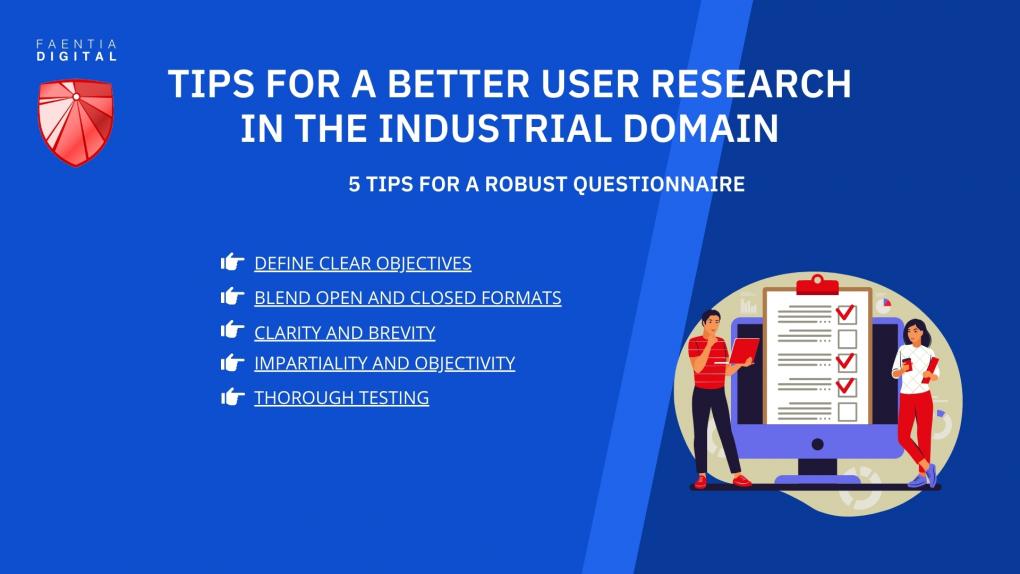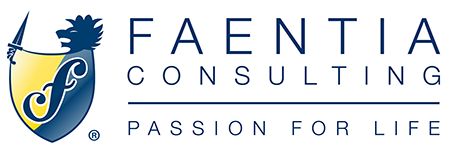
Tips for a better User Research in the Industrial domain
After delving into the distinctions between Quantitative and Qualitative methods of User Research in the Industrial domain, here some practical tips to maximize the efficacy of both approaches.
5 Tips for a robust questionnaire
1) Define Clear Objectives: Clearly outline Clearly outline the research objectives. Precision ensures focused data collection, whether measuring machine performance, UI effectiveness, or User issues.
2) Blend Open and Closed Formats: Use multiple-response and Likert-scale formats for quantifiable data. Include open-ended questions for insights. Employ various scales within the same questionnaire as needed.
3) Clarity and Brevity: Craft concise, unambiguous, and immediately understandable questions. Keep it brief to prevent User fatigue and maintain response quality.
4) Impartiality and Objectivity: Pose questions without implying desired answers. The aim is to measure the actual situation, not to influence responses.
5) Thorough Testing: Rigorously test the questionnaire with a small pilot group to ensure clarity, remove ambiguity, and validate question effectiveness.
5 Tips for a Productive Interview
1) Structured Guide: Develop a semi-structured guide, outlining topics to be covered, but maintain flexibility for spontaneous inquiries based on responses.
2) Build Rapport: Establish transparency about the research purpose. Foster a respectful atmosphere to put the interviewee at ease.
3) Active Listening and Probing: Have Users articulate each step of operations. Listen attentively and ask "why" or "how" for deeper insights only at the conclusion of each operation.
4) Comprehensive Recording: With consent, record for detailed review. Alternatively, include assistants for notes to ensure diverse information sources.
5) Thorough Transcription and Analysis: Transcribe data for pattern identification. Collaborate with the team to analyze findings and verify consistency.
Conclusions:
These tips offer a glimpse into the extensive toolkit of a seasoned UX Designer. Practices like equipment testing, tool utilization, and expressing gratitude to participants come with experience. Regardless of using questionnaires or interviews, the crux of User Research, and UCD, is to engage with Users. This step is indispensable for gathering the data needed to develop solutions that truly address User needs. Placing the User at the core means understanding their desires, preferences, and requests—a prerequisite for creating a system, product, or service that resonates with your customers.



